Want to cultivate a new plant in your garden but not sure what to try? It can be fun to explore different varieties that you may never have known were out there. Some of these are also great for bouquets and displays as well. Here’s a list of veggies, fruits, flowers, and others that begin with the letter B.
Flowers that Begin with B
Begonia: You can grow begonias indoors or outdoors. There are many varieties that come in all colors and sizes.

Begonias are native to a humid subtropical and tropical climate. Some species are usually grown indoors as indoor plants.
©Fedotova Olga/Shutterstock.com
Black-Eyed Susan: With bright yellow petals and black centers, Black-Eyed Susans are a great addition to your landscaping. This fun flower is also the state flower of Maryland.
Bellflower: With dark purple flowers that are shaped like small bells, Bellflowers are also known as Campanula.
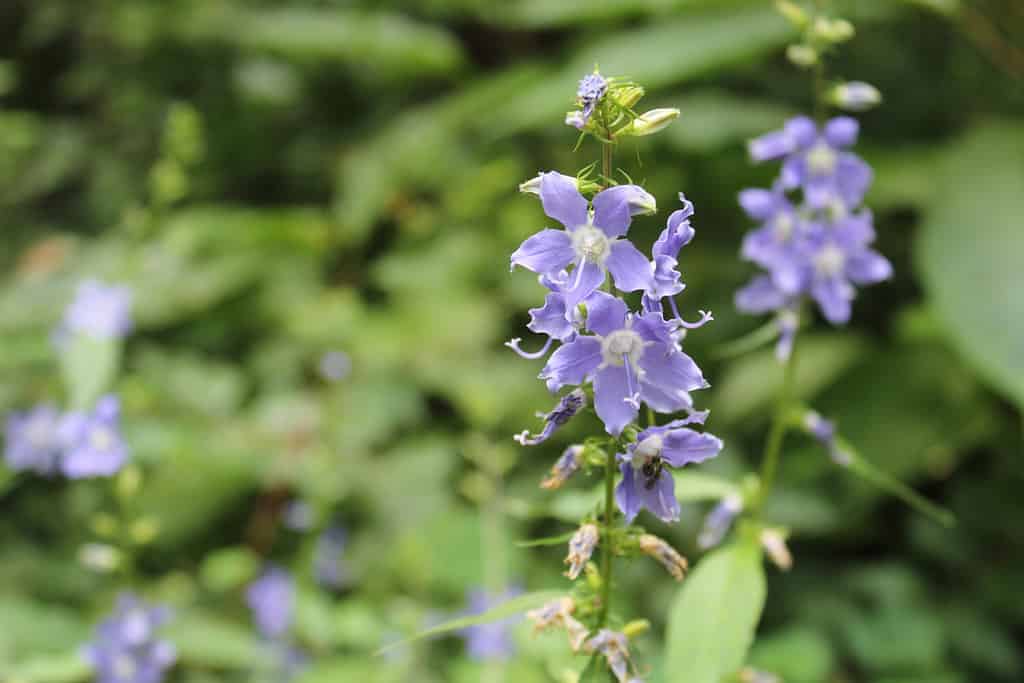
Purple, five-petaled wildflowers known as Tall Bellflower (American Bellflower) grow in the mid-western United States.
©ALong/Shutterstock.com
Bachelor’s Button: These flowers are also known as Cornflowers and are popular in both ornamental and medicinal gardens. They are often a purplish blue but they do come in other color varieties as well.
Baby’s Breath: This flower is popular in bouquets due to its small white flowers. They look great with a variety of other larger, showstopper flowers.
Bougainvillea: These plants grow in vines and produce brilliant pink, purple, and other colorful flowers. The flowers are very dense, giving them a truly spectacular appearance when they grow up a wall or on the top of an archway. They like hot and humid climates and are native to parts of South America.

Bougainvillea are known for their brilliantly colorful blossoms.
©rawf8/Shutterstock.com
Bluebell: Different varieties of bluebells are native to various parts of the world, including Europe and North America. They grow from bulbs and are especially striking when grown in large clusters.
Bee Balm: This flower is also known as Wild Bergamot because it smells similar to bergamot oranges. It is a member of the mint family.
Bird of Paradise: The scientific genus Strelitzia includes five species of these flowers, named Bird of Paradise for their resemblance to tropical birds. The flower is native to South Africa and grows well in hot, humid, tropical climates.
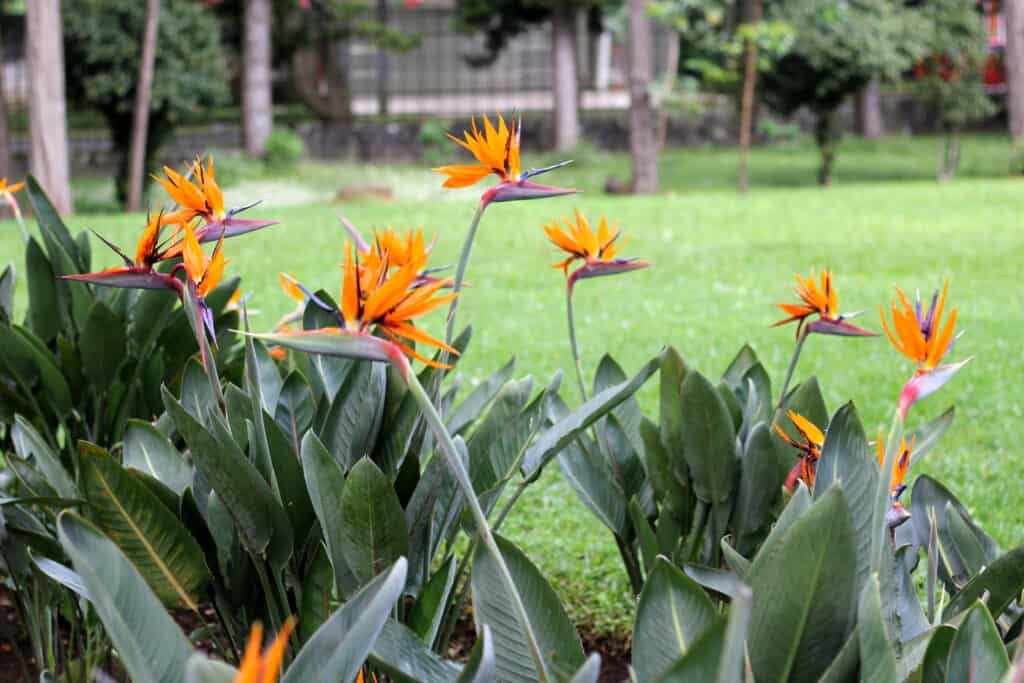
Strelitzia reginae, popularly called bird of paradise, is a herbaceous species native to South Africa.
©iStock.com/Arlette Lopez
Bleeding Heart: These delicate flowers are named for their resemblance to a heart. They have multiple pink blossoms that are shaped like hearts and dangle from the stems.
Butterfly Bush: There are over 100 species of Butterfly Bush and they are very popular with gardeners and landscapers. Some can get over 10 feet tall and have large, colorful, bushy blossoms that give off a nice fragrance. They are also easy to grow and thrive in many areas.
Buttercup: The blossoms on these flowers are brightly colored and glossy, making them great additions to cut bouquets.
Vegetables that Begin with B
Beans: The varieties of beans are almost endless. They are part of the Fabaceae family. The edible portion is actually the seed of these plants.
Bell Peppers: The most common colors of these crispy veggies are green, red, orange, and yellow. But there are a lot of other varieties as well.

Bell peppers come in a rainbow assortment of colors.
©Alberto Masnovo/Shutterstock.com
Beets: The edible portion of this plant is actually the root. They are typically bright red but can come in other color varieties as well.
Broccoli: This plant is easy to grow, although you should take care to watch for caterpillars and aphids, both of which can wreak havoc on broccoli, cabbage, kale, and other similar plants in the garden.
Butternut Squash: This winter squash is delicious in the colder months, especially roasted or in a soup or stew. It grows on a vine and is easy to harvest.

Butternut squash has orange flesh and plenty of seeds, which you’ll remove before cooking and eating the squash.
©iStock.com/chengyuzheng
Bok Choy: This leafy green is related to cabbage and works in many similar recipes. It tends to do best in cool environments but still needs plenty of sun.
Brussel Sprouts: These little veggies resemble tiny cabbages so it shouldn’t be surprising that the two plants are related. They grow on stalks with up to 80 or more sprouts per plant. They tend to be just around 1 or two inches each.
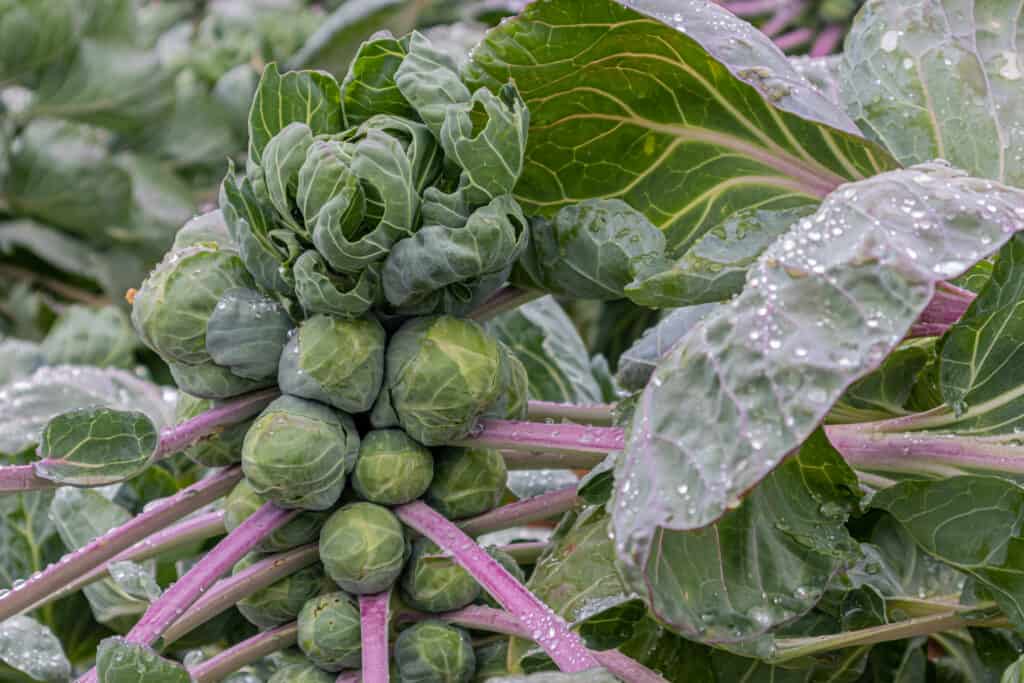
Brussels sprouts grow in dense stalks.
©mm7/Shutterstock.com
Banana Squash: With a flavor similar to butternut squash, banana squash is a good option for some fresh vegetables in the fall and winter months. The squash has yellowish-orange flesh inside with an orange exterior.
Belgian Endive: This is a variety of lettuce and is often used in salads and similar dishes. They have a slightly bitter taste when eaten raw but can also be grilled for a different flavor profile.
Black Eyed Peas: A legume in the Leguminosae family, these are actually beans, not peas as their name suggests. They are popular in dishes around the New Year when many cultures believe that they bring good luck for the upcoming year.
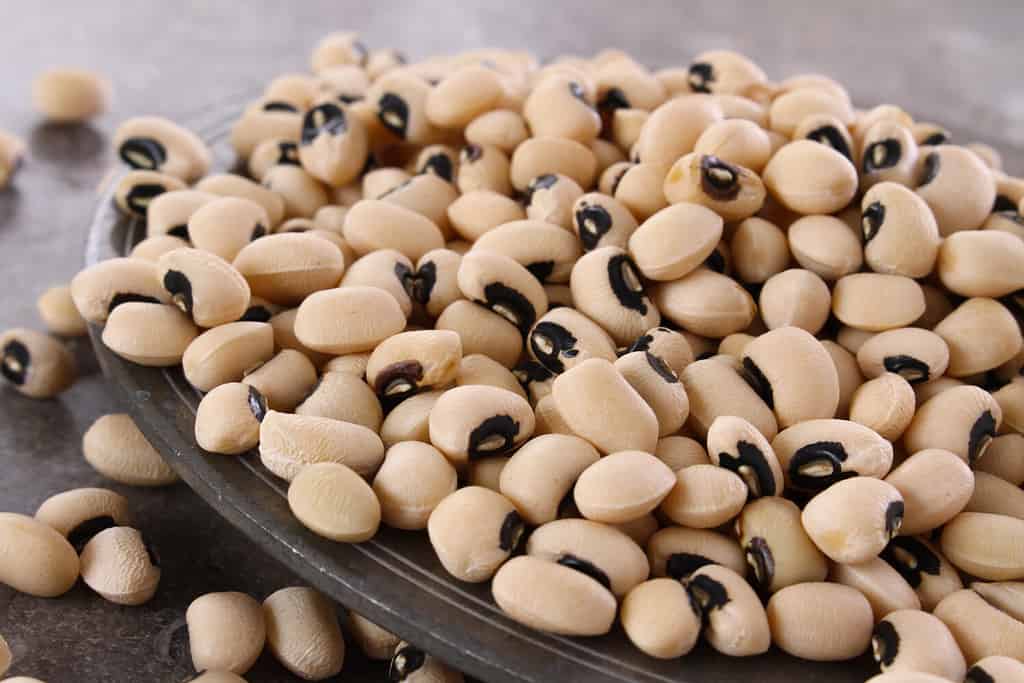
With black spots on one side, it’s easy to see how Black Eyed Peas got their name.
©Chatham172/Shutterstock.com
Broad Beans: You may know these beans by their other name, fava beans. They are part of the Fabaceae family and are very easy to grow in a variety of environments.
Butter Lettuce: This sweet, tender lettuce variety is popular in delicate dishes, although you should be careful not to overpower it with other flavors or ingredients. Because it has large leaves, butter lettuce also makes a fantastic lettuce wrap.
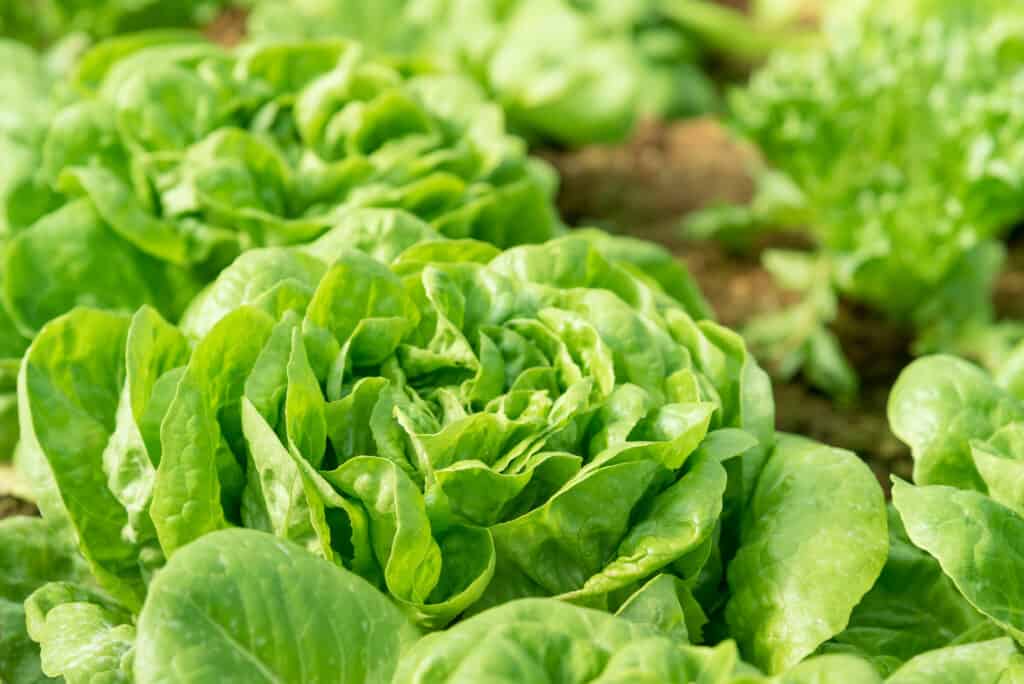
Butter lettuce’s first documentation of cultivation began in Ancient Egypt.
©iStock.com/fotolism_thai
Fruits that Begin with B
Banana: These trees like warm temperatures, plenty of sun, and moist soil, although they can tolerate partial shade. They do well outdoors in tropical, humid environments or indoors in cooler locations.
Black Cherry: These cherries have darker outer skin and are incredibly sweet. They make a great snack when eaten raw.
Blackberries: Growing wild or cultivated on bushes, blackberries are one of the larger berry varieties. They tend to have a strong tart flavor that turns sweeter as they mature. These berries are delicious in baked desserts, such as pies and tarts, or even alongside savory ingredients.
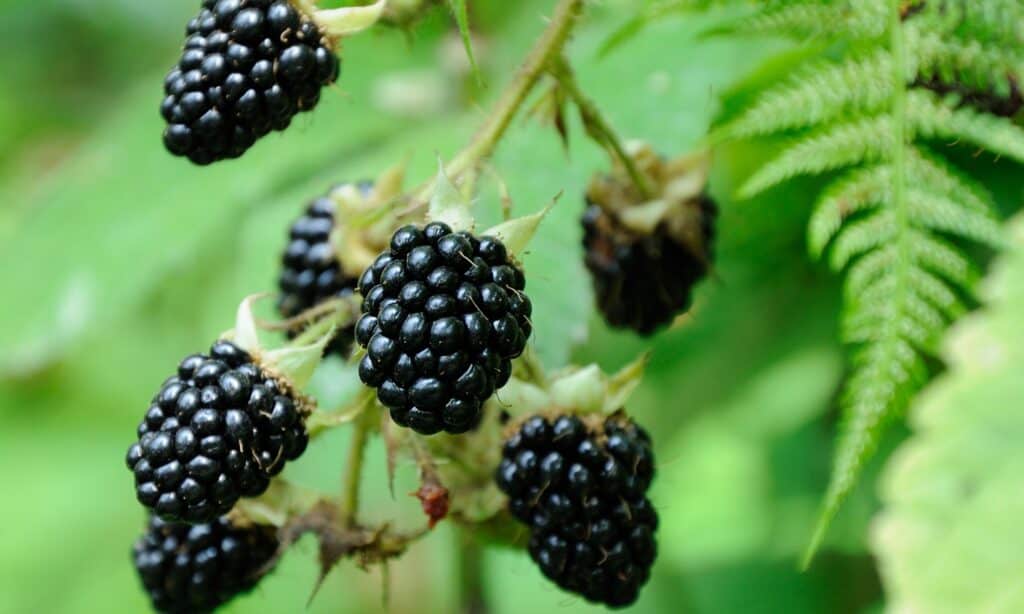
Blackberries grow on thorny bushes.
©iStock.com/syaber
Blueberry: A smaller berry option, blueberries have blue skin which gives them their name. Depending on their harvest date, blueberries range from tart to sweet. Like blackberries, they grow on bushes.
Boysenberry: These berries look similar to blackberries or raspberries. This is due to their heritage as a cross between the European raspberry, European blackberry, American dewberry, and loganberry. They taste similar to both blackberries and raspberries.
Black Currant: Another berry, black currants look similar to blueberries although they are much darker. The flavor profile is more tart, however. Black currants are common in prepared items, like jams, because it is easier to adjust the sweetness. Black currants are high in Vitamin C, which makes them a good addition to a healthy meal.
Blood Orange: This is a variety of orange with dark red flesh, hence its name. A specific type of pigment called anthocyanins gives the orange its brilliant color. This pigment is not common in other oranges or citrus fruits.
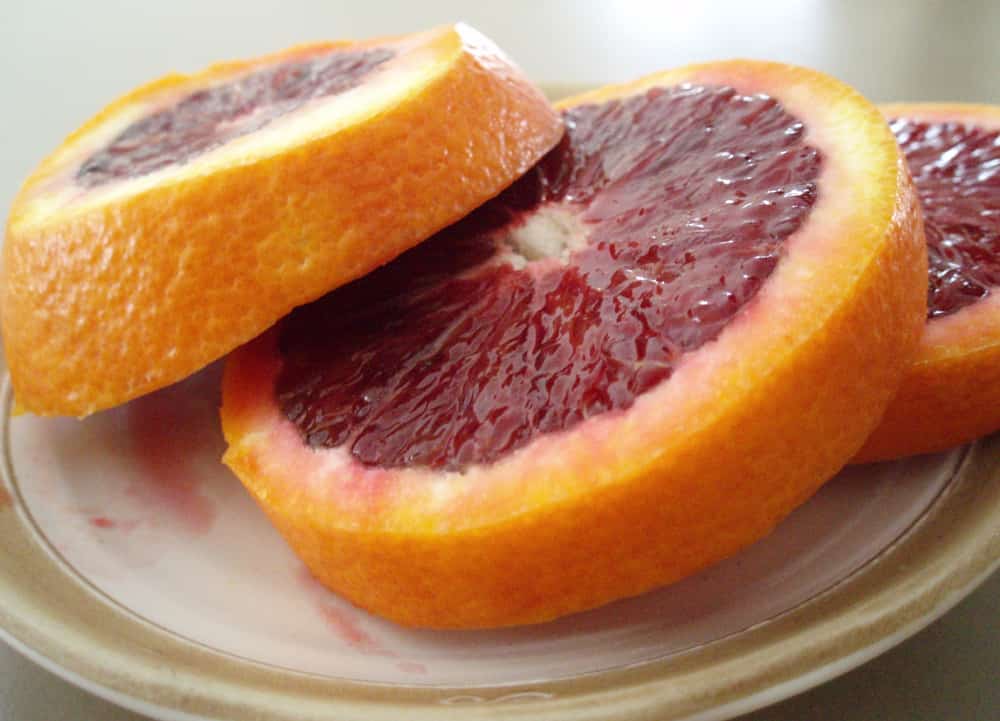
Blood oranges are easy to spot once you cut into the fruit.
Brazil Nut: These are actually seeds, not nuts as their name suggests, which puts them in the fruit category. They taste delicious roasted or raw or added to dishes as a crunchy garnish.
Breadfruit: With a usual appearance, these fruits make a fun addition to a variety of dishes. They are common in the South Pacific. In this area, people typically cook breadfruit before eating it. It needs a hot, tropical climate to survive.
Basil: This plant is an herb that can grow indoors or outdoors, depending on the climate. It pairs well with savory dishes but also makes a nice addition to fresh fruit and salads. Basil is one of the easier herbs to grow and only requires sun and moderate watering.
Other Plants that Begin with B
Bamboo: This is actually a type of grass with very large stems that give it structure. Bamboo grows very fast, making it popular as a sustainable choice for everything from wood flooring to small decorative objects. It is easy to grow, although you’ll need to keep up with trimming it back so that it doesn’t take over your yard.

Within the category of “bamboo” are diverse species, which range in size from tiny dwarf species to towering tree-like bamboo plants.
©Phuwadon Phichairat/Shutterstock.com
Buckeye: Also called the Ohio Buckeye for its native location, this tree has the scientific name Aesculus glabra. They possess large nuts, which fall in the late summer.
Birch: One of the most easily recognized aspects of these trees is their striped bark. Silver birches have beautiful white and silver trunks that many growers like in the garden. There are different types of birch trees that vary in size, color, and location. The characteristic horizontal markings on their trunks are common to all birches.
Bonsai: This term actually refers to the art of growing and shaping trees in small pots but there are a few varieties synonymous with this practice. Pine, juniper, and Japanese maple are all popular options for bonsai trees.
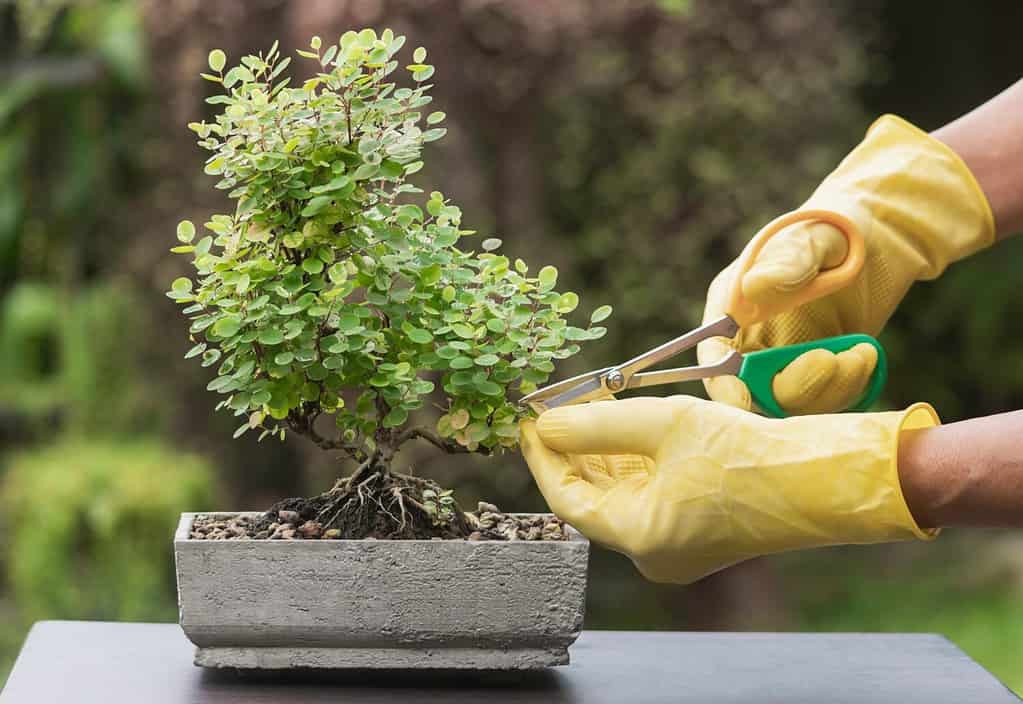
Bonsai includes pruning and trimming plants grown in pots.
©MintraTH/Shutterstock.com
Balsa: These trees are the only species within the Ochroma genus and are popular in woodworking. The wood from a balsa tree is lightweight and easy to carve while still being extremely strong.
Baobab: If you’ve seen photos of trees with massive trunks and tiny branches, you might have spotted a Baobab tree. They are native to parts of Africa and Australia.
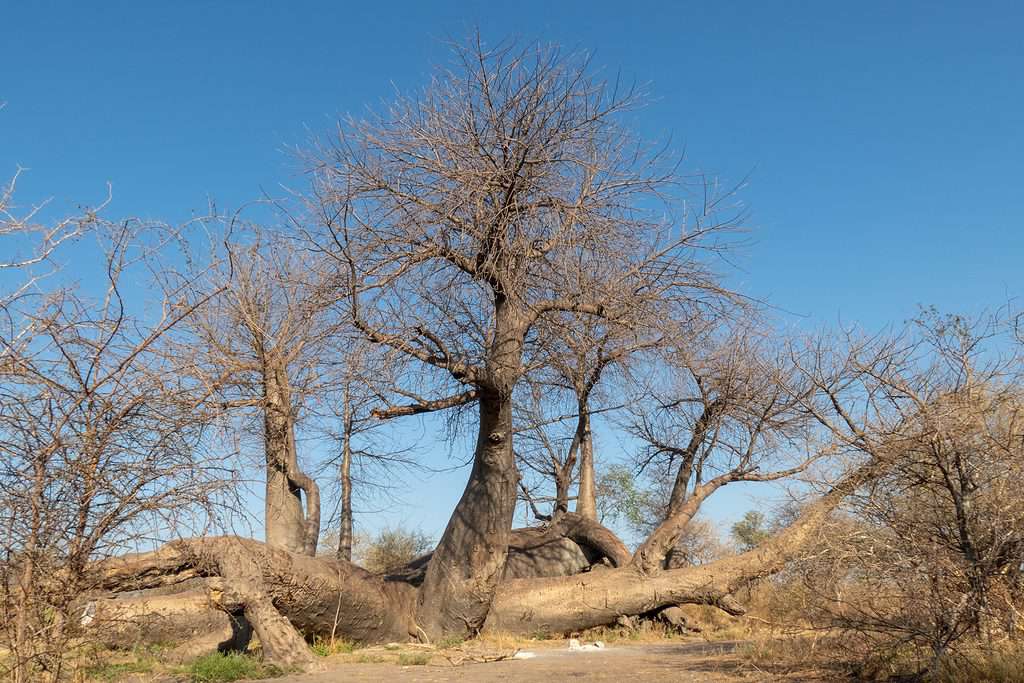
Dorsland Baobab is 2,100 years old, making it the oldest tree in Namibia.
©Kareen Broodryk/Shutterstock.com
Beech: There are multiple species of Beech trees and all are deciduous. Beech tree wood is popular in woodworking.
Banyan: Banyan trees are a type of fig tree. They have far-reaching roots which allows them to grow. As they grow, often over hundreds of years, they develop additional trunks and can spread out over a large space. These trees can have spiritual or cultural significance in many parts of the world.
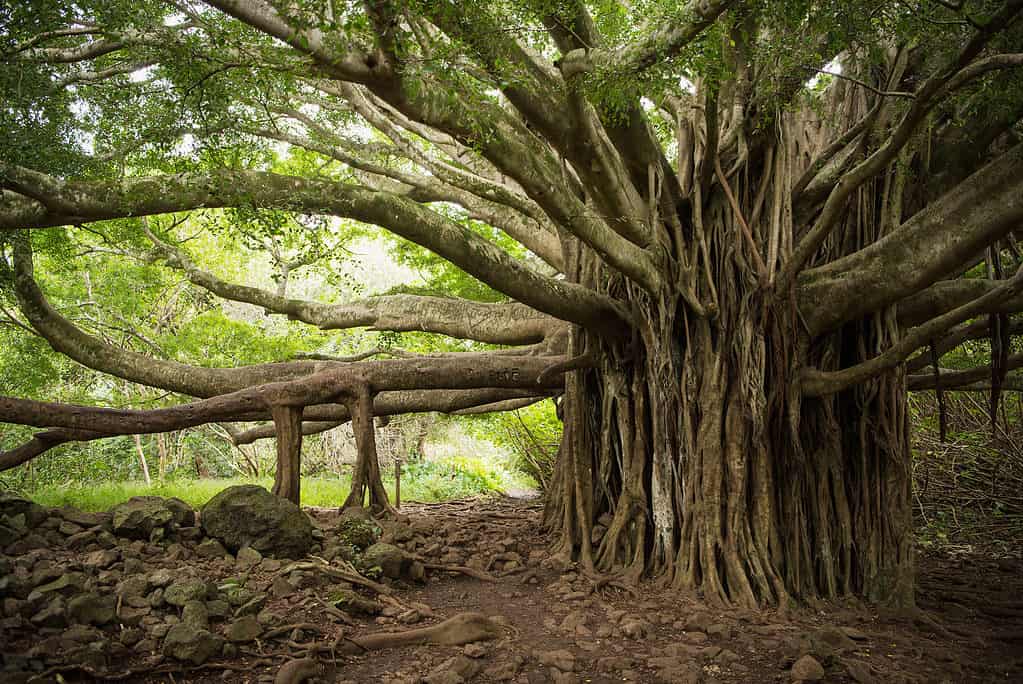
A Banyan tree is a type of fig tree that is native to India and Southeast Asia.
©Ralf Broskvar/Shutterstock.com
Balsam Fir: These evergreens make excellent materials for woodworking and paper-making. They are also popular as Christmas trees.
Bramble: Brambles refer to the Rubus genus within the rose family. There are over 1,300 species and many produce berries. For this reason, growers describe many berries as growing in brambles or thorny vines.
The photo featured at the top of this post is © vincentchuls/Shutterstock.com
Thank you for reading! Have some feedback for us? Contact the AZ Animals editorial team.







